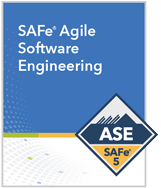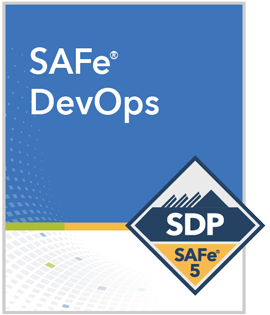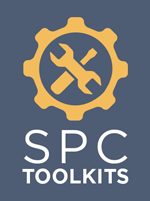![]()
Whenever you let up before the job is done, critical momentum can be lost and regression may follow.
—John Kotter, Leading Change
Coach ART Execution
This is article nine in the SAFe® Implementation Roadmap series. Click here to view the entire roadmap.
The previous articles in the SAFe Implementation Roadmap series described the first eight steps:
- Reaching the Tipping Point
- Train Lean-Agile Change Agents
- Train Executives, Managers, and Leaders
- Create a Lean-Agile Center of Excellence (LACE)
- Identify Value Streams and Agile Release Trains (ARTs)
- Create the Implementation Plan
- Prepare for ART Launch
- Train Teams and Launch the ART
At this stage of the implementation, the first big events are now in the rearview mirror. Teams have been trained, the first ART is launched, and the first Program Increment (PI) Planning event has been held. The result of all this effort is an empowered, engaged, and aligned team-of-Agile-teams ready to begin building solutions that deliver value.
Before moving on to the critical work of the train, it’s important to understand that training and planning alone do not make the newly formed teams and ARTs Agile. They simply provide the opportunity to begin the journey of becoming Agile. To support this journey, leadership—and SAFe Program Consultants (SPCs) in particular—must be mindful that knowledge does not equal understanding. It takes time to achieve effective team-level Agile practices and behaviors (typically several PIs), which is why significant effort must be made to coach ART execution.
Details
To reach this point, the enterprise has made a significant investment in developing SPC change agents and training stakeholders in the new way of working. Now is the time for that investment to pay off, as SPCs and Lean-Agile Leaders focus on what really matters: helping to assure the delivery of value in the shortest sustainable time while producing the highest quality. That will start to happen with team-level and ART-level coaching.
Team Coaching
While new SPCs often focus on enabling the program level roles and events, the foundation of Program Execution is built upon is a competency in Team and Technical Agility. SPCs must also provide coaching to Agile Teams.
Initially, team coaching will likely focus on mastering the team level SAFe roles and events, including:
- Iteration planning – refine and adjust initial iteration plans developed during PI Planning
- Backlog refinement – refine and adjust the scope and definition of user stories defined during PI Planning
- Daily stand-ups – to help the team stay aligned on progress toward iteration goals, raise impediments and get help
- Iteration Reviews and System demos – to get feedback from stakeholders and assess progress toward PI Objectives
- Iteration Retrospectives – to review team practices and identify ways to improve
- Scrum-of-Scrums, PO Sync and ART Sync – to maintain alignment and resolve issues with other teams on the ART
But this is only the beginning. As teams gain confidence in their roles and events, and because of the transparency they create, technical proficiency and best practice will become the next opportunity for relentless improvement. In order to establish a smooth and consistent flow of value, Agile Teams working on software solutions must become proficient in modern software engineering techniques and disciplines such as Test Driven and Behavior Driven Development, Continuous Integration/Deploy, Test Automation, and Pair Programming. These practices were established in the Extreme Programming (XP) movement and remain the foundation for software craftsmanship. For a summary of these practices, see the article on Built-in Quality as well as the Team and Technical Agility competency article.
The Agile Software Engineering course can be used as a continuing education offering during the first Innovation & Planning iteration, or during a subsequent PI as need and opportunity dictates, to accelerate the development of these critical software engineering disciplines.
 The discipline of software engineering has evolved over the past decade with the introduction of Lean-Agile and DevOps principles and practices. New skills and approaches to software engineering help organizations deliver software-centric solutions faster, more predictably, and with higher quality.
The discipline of software engineering has evolved over the past decade with the introduction of Lean-Agile and DevOps principles and practices. New skills and approaches to software engineering help organizations deliver software-centric solutions faster, more predictably, and with higher quality.
During this three-day, workshop-oriented course, attendees will learn how Lean-Agile principles are driving these changes. They will connect these principles to modern developing practices including XP technical practices, Behavioral-Driven Development (BDD), Test-Driven Development (TDD), and applying the Agile Testing Quadrant. Attendees will learn the best practices to model, design, implement, verify, validate, deploy, and release stories in a SAFe Continuous Delivery Pipeline.
ART Coaching
While Team and Technical Agility forms the foundation of Program Execution, it’s the Agile Product Delivery competency that enables the shortest sustainable lead-time to value. Without coaching from SPCs to develop and grow this competency, Essential SAFe can become reduced to the coordination and orchestration of Agile teams – a pale shadow of its potential. Therefore, SPCs engage with Scrum Masters across the ART to help accelerate adoption and mastery of this competency.
As with Agile Teams, coaching the ART typically starts with the essential SAFe roles and events, including:
- PI Planning – create alignment and shared commitment to a common set of objectives
- System Demos – close the rapid feedback loop through integration and validation of working systems
- Inspect & Adapt Workshops – enable relentless improvement and systems thinking
- Scrum-of-Scrums, PO Sync, and ART Sync – maintain alignment, resolve issues, and enable attainment of PI Objectives
But these just scratch the surface of the ART’s purpose and potential. To help ARTs optimize the flow of value, SPCs must coach ART leaders to look beyond the current PI and current capabilities. As roles and events are mastered, the focus must shift to the Continuous Delivery Pipeline and the enterprise competency of Agile Product Delivery. This involves both managing and continuously improving the speed and quality of the ART’s capability to:
- Continuously Explore: Sense and respond to market/business needs to build and maintain the program Vision, Roadmap, Backlog and Architectural Runway.
- Continuously Integrate: Build, validate and learn from working system increments
- Continuously Deploy: Deliver validated features into production, where they are ready for release
The Program Kanban is the primary tool for visualizing and managing the continuous delivery pipeline, while DevOps, Value Stream Mapping, and the Problem Solving Workshop are the coach’s primary tools for enhancing these capabilities.
The SAFe DevOps course can be used as a foundation for these practices during the 1st Innovation & Planning iteration, or for continuing education during subsequent PIs as the need and opportunity dictates, to accelerate development of this competency.
 This two-day course provides a comprehensive overview for understanding the DevOps competencies needed to accelerate time-to-market by improving the flow of value through the Continuous Delivery Pipeline. Attendees will map the current value stream through their delivery pipeline from idea to cash and identify practices that will eliminate bottlenecks to flow.
This two-day course provides a comprehensive overview for understanding the DevOps competencies needed to accelerate time-to-market by improving the flow of value through the Continuous Delivery Pipeline. Attendees will map the current value stream through their delivery pipeline from idea to cash and identify practices that will eliminate bottlenecks to flow.
The course will build an understanding of the complete flow of value from Continuous Exploration to Continuous Integration, Continuous Deployment, and Release on Demand.
Attendees will leave with the tools they need to execute an implementation plan for improving their delivery pipeline, and the knowledge they need to support the plan. The course also prepares students for the optional SAFe® 4 DevOps Practitioner (SDP) certification exam.
Clearly, there’s no shortage of opportunities for SPCs and Lean-Agile Leaders to practice and demonstrate their new skills and mindset.
An important note: For first-line development and engineering managers, the move to SAFe and Lean-Agile adoption can be scary. Traditional daily and task-oriented supervision is no longer required. Instead, these new ‘Lean-thinking manager-teachers’ adopt a servant-leader approach and take on a different set and style of activities as described in the Lean-Agile Leaders article. The short coaching list above also serves notice that the knowledge and skills of our managers and leaders are incredibly valuable, as there is much work to be done. It just needs to be done differently.
Inspect and Adapt
![]() There is no coaching opportunity more critical than the first Inspect and Adapt workshop. That’s where everyone will learn how the PI went, how the teams performed against their PI objectives, how well the organization is adopting SAFe, and how the solution they developed really worked at that point in time. In addition, SPCs and coaches can lead the first real corrective action and problem-solving workshop.
There is no coaching opportunity more critical than the first Inspect and Adapt workshop. That’s where everyone will learn how the PI went, how the teams performed against their PI objectives, how well the organization is adopting SAFe, and how the solution they developed really worked at that point in time. In addition, SPCs and coaches can lead the first real corrective action and problem-solving workshop.
This gives teams the tools they need to improve their performance independently. It also allows them to work together—along with their management stakeholders—to collaboratively address the larger impediments that they face.
Moving Forward
For the first ART, then, it’s onward in their journey of relentless improvement. But for the reader, it’s on to the next article in the Implementation Roadmap series: Launch More ARTs and Value Streams.
NextAdditional Resources
SAFe Program Increment Toolkit
Last update: 10 February 2021






